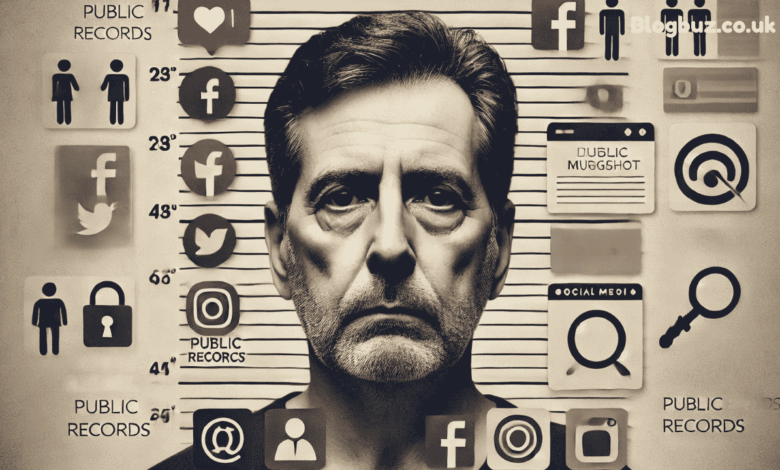
Dennis Eugene Durden Mugshots often serve as powerful images, representing moments of alleged wrongdoing frozen in time. They spark public curiosity and can heavily influence perceptions, even before a court renders judgment. In the digital era, mugshots spread like wildfire, quickly becoming part of a person’s online identity. One such case that has recently gained attention is that of Dennis Eugene Durden. This article delves deep into the circumstances surrounding his mugshot, exploring legal proceedings, media coverage, and broader social implications.
Understanding stories like that of Dennis Eugene Durden isn’t just about feeding curiosity—it’s also about comprehending the complex intersection of privacy, legal rights, and media ethics. Responsible reporting ensures we don’t reduce individuals to a single image, instead offering a nuanced look at the facts, the context, and the consequences.
Who is Dennis Eugene Durden?
Dennis Eugene Durden is an individual who, until recently, lived a relatively private life away from the public spotlight. Like many others, he may have had a background marked by everyday struggles, personal achievements, and life events that shaped who he is. Information about his early life, educational background, and family details remain scarce, mainly due to limited public exposure before the mugshot surfaced.
What makes Durden’s story particularly compelling is the sudden shift from anonymity to viral recognition, sparked solely by a single photograph. In a society where public identity can be molded overnight, Dennis became emblematic of a much larger discussion around mugshots, justice, and public perception. The lack of extensive prior media coverage adds a layer of mystery, prompting many to ask: who is the man behind the photo?
The Incident Leading to the Mugshot
The chain of events that led to Dennis Eugene Durden’s mugshot began with an incident that, while not initially high-profile, quickly gained attention. According to preliminary police reports, the situation involved allegations of criminal behavior that warranted an official arrest. The exact nature of the alleged incident is still under investigation, with law enforcement maintaining procedural confidentiality.
What is known is that the event occurred in a jurisdiction known for active law enforcement transparency, which partly explains why the mugshot was released promptly. The arrest, reportedly carried out without resistance, followed routine protocol. The incident was logged, and Durden was taken into custody pending formal charges. As is customary, the mugshot was taken as part of the booking process and subsequently added to public record.
Law Enforcement Involvement
Multiple agencies were reported to have played a role in the arrest of Dennis Eugene Durden. Local police were the first to respond, followed by potential involvement from county or state authorities, depending on the severity of the charges. The cooperation between agencies ensured a swift and procedural arrest, in accordance with legal standards.
Authorities conducted the arrest at a location deemed safe for both law enforcement and the accused. Initial reports indicate that no forceful resistance or complications occurred during the detainment. Law enforcement issued brief statements to the media confirming the arrest and mugshot release but withheld detailed information to protect the integrity of the investigation.
Charges Filed
Dennis Eugene Durden faced multiple charges stemming from the arrest. While the full list is not publicly confirmed, early reports suggest that the charges include both misdemeanors and potentially felony-level offenses. These could range from property crimes to offenses that directly impact public safety.
Each charge carries its own legal definition, with implications varying based on jurisdiction. Misdemeanors may result in fines or limited jail time, while felonies could lead to significant legal penalties, including prison sentences. The exact nature and classification of the charges will become clearer as the case proceeds through the judicial system.
Mugshot Release and Public Reaction
The mugshot of Dennis Eugene Durden was released shortly after his booking, in line with public records regulations in the arresting jurisdiction. It quickly found its way onto local news sites and, soon after, onto social media platforms. What followed was a rapid sharing of the image, accompanied by both speculation and commentary.
Public reactions varied widely. Some expressed shock or disbelief, while others jumped to conclusions about Durden’s guilt or innocence. The mugshot became a visual focal point, leading to the spread of rumors, memes, and digital judgments. This phenomenon raises important questions about the role mugshots play in shaping narratives before facts are fully established.
Legal Proceedings
Following his arrest, Dennis Eugene Durden made an initial court appearance where the charges were formally presented. During this hearing, bail conditions were set, and a preliminary timeline for the legal process was established. It remains unclear whether Durden entered an initial plea or requested additional time to consult legal counsel.
Durden has since retained legal representation, which is expected to play a crucial role in navigating the complexities of his case. The legal team is likely preparing motions, conducting discovery, and negotiating potential plea deals or preparing for trial. Updates on these proceedings are expected in the coming weeks, with public interest remaining high.
Case Updates and Status
As of the latest reports, the case against Dennis Eugene Durden is ongoing. The court has scheduled future hearings, and new details are expected to emerge through legal disclosures. Media outlets continue to monitor the situation, though official updates are released cautiously to avoid prejudicing any potential jury pool.
Dennis Eugene Durden Mugshot Observers are particularly interested in whether the case will go to trial or be resolved through a plea agreement. Legal experts note that the case’s trajectory could set precedents for similar publicized mugshot incidents, especially in terms of media exposure and public influence.
Social Media & Online Impact
The mugshot’s rapid spread across social media platforms significantly amplified the public’s awareness of the case. Within hours, it was shared across Facebook, Twitter, Reddit, and even TikTok, with users speculating about the charges and Durden’s character. Unfortunately, many of these discussions were based on little more than the image and minimal context.
This online phenomenon underscores the power and danger of viral content. While it increases public awareness, it can also contribute to misinformation, cyberbullying, and digital defamation. The case of Dennis Eugene Durden exemplifies how quickly an image can be removed from its original context and become a symbol for narratives far beyond the truth.
Privacy and Reputation Concerns
Public mugshots often cause lasting damage to a person’s reputation, even if they are eventually found innocent. For Dennis Eugene Durden, the release of his mugshot initiated a digital footprint that could follow him indefinitely. Employers, family members, and friends may see the image and make judgments without knowing the full story.
In an era where reputation is linked closely to one’s online presence, such exposure can have real-world consequences. Durden’s case revives debates about the ethics of making mugshots publicly accessible and whether reforms are needed to protect individuals from premature public shaming.
Media Coverage Analysis
News outlets covering the Dennis Eugene Durden story have varied in their approach. Some focused on factual reporting, sticking closely to police records and official statements. Others leaned into sensationalism, using dramatic headlines and speculative commentary to attract clicks.
This variation reflects a broader issue in journalism: the balance between informing the public and respecting due process. Ethical reporting demands restraint, context, and a commitment to truth over virality. Media consumers must learn to differentiate between responsible journalism and exploitative content.
Public Records and Accessibility
In the United States, mugshots are generally considered public records. This means that, unless sealed by a court order, they can be accessed by anyone. Laws vary by state, and some jurisdictions have started limiting access due to growing concerns about misuse.
For individuals like Dennis Eugene Durden, public accessibility of mugshots means that one moment can become a lifelong digital scar. Efforts to remove or suppress these images are often costly and legally complex, highlighting the need for clearer guidelines and possible reforms.
Legal Rights of the Accused
Despite public interest and media coverage, Dennis Eugene Durden retains all legal rights afforded to any accused individual. These include the presumption of innocence, the right to a fair and speedy trial, and protection against self-incrimination and defamation.
Understanding these rights is crucial for both the public and media. It ensures that Durden receives a just legal process and that his case does not become a casualty of trial by media. Respecting these rights also sets a precedent for how similar cases should be treated moving forward.
Psychological and Social Impacts
The psychological toll of being publicly exposed through a mugshot can be immense. Feelings of shame, anxiety, and depression are common, particularly when individuals are judged based on limited information. For Dennis Eugene Durden, the social repercussions could extend to strained relationships and community alienation.
Support systems are critical in such situations, but not always available. The stigma attached to mugshots can isolate individuals, making rehabilitation or reintegration challenging. Recognizing the human element behind each mugshot is essential to fostering a more empathetic society.
The Broader Picture of Mugshots in America
Dennis Eugene Durden Mugshot The use of mugshots in America dates back to the 19th century, initially as a tool for law enforcement identification. Over time, however, mugshots evolved into public spectacles, often weaponized for shame and punishment beyond the courtroom.
Today, debates continue over whether mugshots should be released to the public at all. Advocates for transparency argue they inform communities, while critics cite the long-term harm and potential for misuse. The story of Dennis Eugene Durden sits squarely in the middle of this national conversation.
State Laws on Mugshot Publications
Depending on the jurisdiction where the arrest occurred, laws governing the publication of mugshots vary widely. Some states have passed legislation to restrict access or allow individuals to petition for removal. Others maintain full transparency, citing public interest.
Understanding these legal nuances is essential for anyone attempting to manage their digital reputation after an arrest. In Durden’s case, the laws of his state will determine whether and how his mugshot can be removed or suppressed in the future.
The Role of Mugshot Websites
Commercial websites that aggregate and display mugshots often do so under the guise of public service. However, many operate on a pay-to-remove model, charging individuals hundreds or thousands of dollars to delete their images.
These practices have faced legal challenges, with courts increasingly siding with individuals against exploitative business models. For people like Dennis Eugene Durden, these sites represent an additional layer of harm, extending the life of an arrest far beyond legal proceedings.
Ethical Journalism and Mugshots
Journalists have a responsibility to report ethically, especially in sensitive cases involving criminal allegations. Publishing a mugshot should come with context, balance, and a clear understanding of its impact on the accused and the public.
Ethical journalism considers the implications of sensational reporting and strives to maintain accuracy, fairness, and humanity. The way Dennis Eugene Durden’s story is covered will serve as a litmus test for the media’s commitment to these principles.
Internet and the Digital Footprint
Once a mugshot enters the internet, it can be nearly impossible to erase. Search engines index these images, and third-party sites copy them, making complete removal difficult. For Dennis Eugene Durden, his digital footprint was permanently altered the moment his mugshot was uploaded.
Efforts to reclaim digital privacy often require legal intervention or reputation management services. As society grapples with the permanence of online content, the case for tighter controls over mugshot dissemination grows stronger.
Public Opinion vs. Legal Realities
The court of public opinion often operates independently of the legal system. While the justice system is built on due process and evidence, public perception is shaped by images, headlines, and social media commentary.
For Dennis Eugene Durden, reconciling these two worlds will be a challenge. His legal team must not only fight in court but also manage the narrative playing out online. Bridging the gap between perception and reality is key to ensuring a fair outcome.
Future Outlook for Dennis Eugene Durden
The road ahead for Dennis Eugene Durden is uncertain. Depending on the outcome of his case, he could face legal penalties, probation, or even exoneration. Regardless of the verdict, his name and image have already been etched into the digital world.
Rehabilitation, both legally and socially, will depend on multiple factors, including community support, legal vindication, and public willingness to move beyond a mugshot. The future may still hold opportunities for redemption, especially if justice is served fairly.
Conclusion
Dennis Eugene Durden Mugshot The story of Dennis Eugene Durden is more than a headline or a viral photo—it’s a complex narrative that touches on law, media, privacy, and human dignity. As we navigate a world where information spreads instantly and reputations are fragile, stories like this urge us to think critically and empathetically.
Understanding the broader context behind mugshots can lead to more informed discussions and better policies. In the end, every person deserves to be seen as more than a moment frozen in time.
FAQs
Q1: Why was Dennis Eugene Durden arrested?
Details remain under investigation, but initial reports cite potential criminal charges that prompted the arrest.
Q2: Where was the mugshot taken and released?
The mugshot was taken by local authorities and released publicly under state public records laws.
Q3: Is Dennis Eugene Durden still in custody?
As of the latest updates, Durden has appeared in court and may be out on bail, pending further proceedings.
Q4: Can mugshots be removed from the internet?
Yes, but the process is complicated and may require legal action or professional services.
Q5: What rights does a person have when their mugshot is publicized?
Individuals retain the right to due process, privacy protections, and may pursue legal action if defamed.
Q6: How can I verify if an online mugshot is real or fake?
Check official law enforcement or court websites and avoid relying solely on social media.
Q7: Are there ethical concerns with sharing mugshots online?
Yes, sharing mugshots can lead to defamation, stigma, and the erosion of due process rights.
Q8: Will there be updates about Durden’s case?
Yes, ongoing updates will likely be provided by media outlets and court records.



